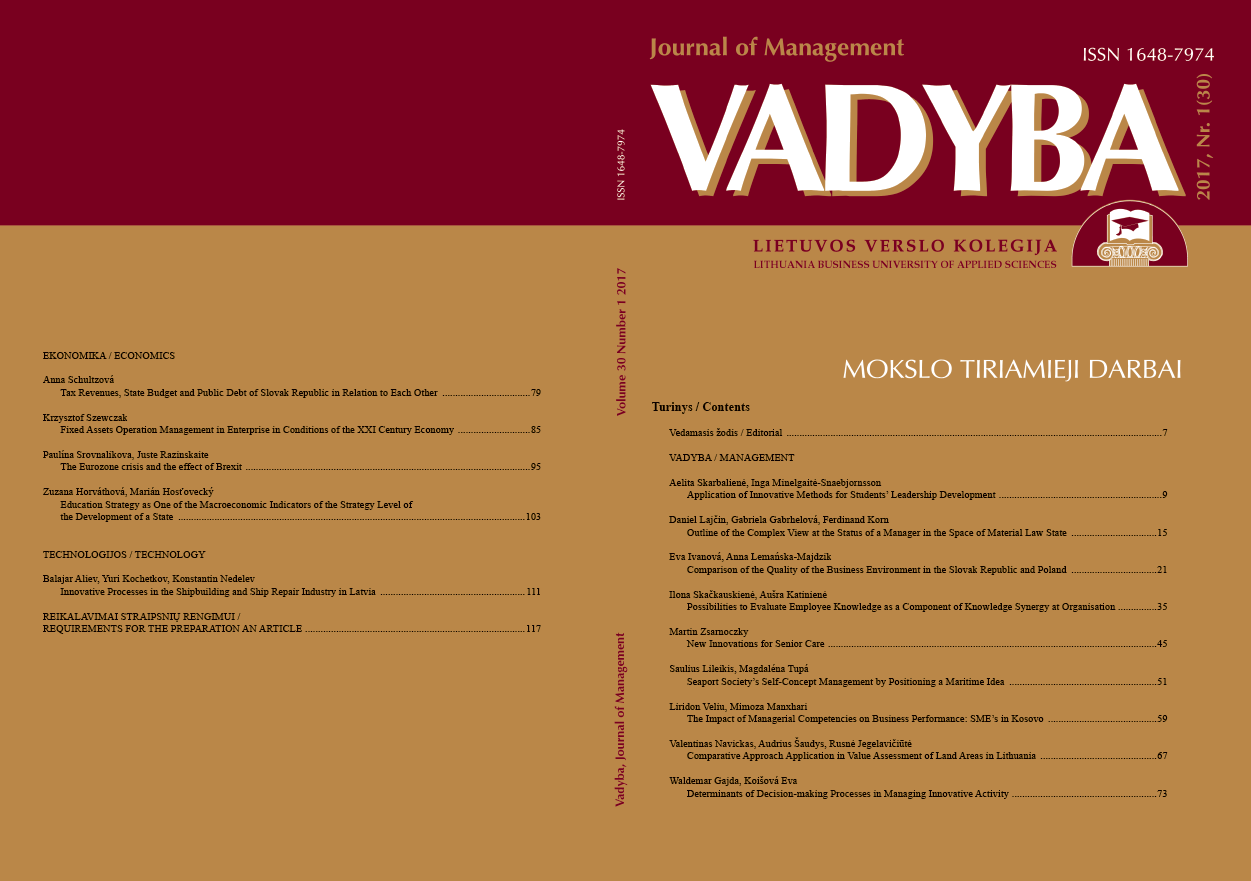INNOVATIVE PROCESSES IN THE SHIPBUILDING AND SHIP REPAIR INDUSTRY IN LATVIA
INNOVATIVE PROCESSES IN THE SHIPBUILDING AND SHIP REPAIR INDUSTRY IN LATVIA
Author(s): Balajar Aliev, Yuri Kochetkov, Konstantin NedelevSubject(s): Economy, National Economy, Business Economy / Management, Financial Markets
Published by: Lietuvos verslo kolegija
Keywords: shipbuilding branch; mathematical modelling; innovation, graph theory.
Summary/Abstract: Leading enterprises of the shipbuilding and ship repair industry in Latvia, for example, Riga and Liepaja shipyards tend to occupy a leading position in their niches in the European and world markets. This means first and foremost commissioning and practical application of innovations and scientific achievements, i.e., innovation. The objective of the research is to determine the characteristics of innovative processes of enterprises in the shipbuilding and ship repair industry in Latvia. The novelty of the research lies in the fact that for the first time the overall system analysis of innovation processes has been performed, taking into account the existing risks in the Latvian shipbuilding industry. The object of research is innovation processes in the shipbuilding and ship repair industry in Latvia. The goal of the research is to investigate the influence and relationships of the main factors of innovative processes in the shipbuilding and ship repair industry at the system level. Methods of research comprise the mathematical modelling of the system and the analysis of the interaction of factors on the basis of graph theory; balance sheet analysis as well as pulse analysis in the system. For the shipbuilding and ship repair industry in Latvia, the research proposes an interactive model of innovations taking into account risks. The model of the innovation process has mathematically been considered as a signed weighted digraph. The main groups of risks are distinguished as separate vertices of the digraph since they play an important role in the system of operative factors: risks and negative relations violate the balance of the system. In general, the weighted digraph analysed in the research is unbalanced. Therefore, any innovation process is not sufficiently stable mainly due to the effect of risks. This reflects the need for continuous risk identification and management at all stages of innovation. The results have demonstrated that the system of factors in the model of innovation process is absolutely and pulse unstable. This reflects the need for continuous strict control of the innovation process, in particular of existing and potential risks.
Journal: VADYBA
- Issue Year: 30/2017
- Issue No: 1
- Page Range: 111-116
- Page Count: 6
- Language: English

